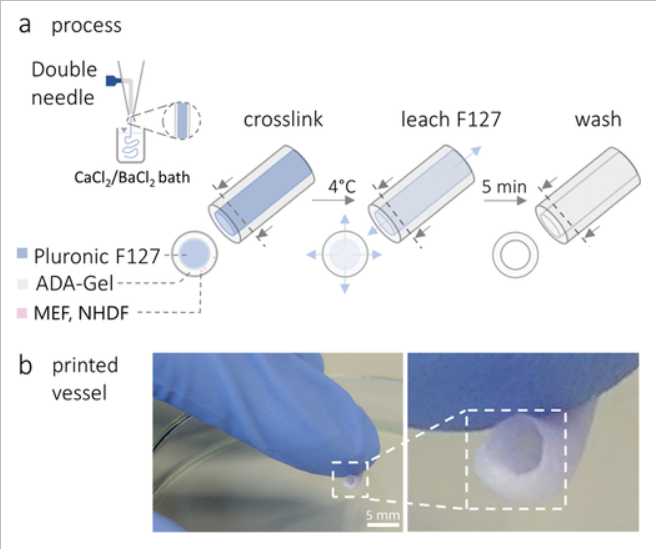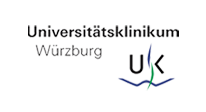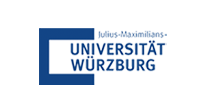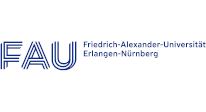
Thomas Distler, Florian Ruther, Aldo R. Boccaccini,* and Rainer Detsch
The vascular system represents the key supply chain for nutrients and oxygen inside the human body. Engineered solutions to produce sophisticated alter-natives for autologous or artificial vascular implants to sustainably replace diseased vascular tissue still remain a key challenge in tissue engineering. In this paper, cell-laden 3D bioplotted hydrogel vessel-like constructs made from alginate di-aldehyde (ADA) and gelatin (GEL) are presented. The aim is to increase the mechanical stability of fibroblast-laden ADA-GEL vessels, tailoring them for maturation under dynamic cell culture conditions. BaCl2 is investigated as a crosslinker for the oxidized alginate-gelatin system. Normal human dermal fibroblast (NHDF)-laden vessel constructs are optimized successfully in terms of higher stiffness by increasing ADA concentration and using BaCl2, with no toxic effects observed on NHDF. Contrarily, BaCl2crosslinking of ADA-GEL accelerates cell attachment, viability, and growth from 7d to 24h compared to CaCl2. Moreover, alignment of cells in the longitudinal direction of the hydrogel vessels when extruding the cell-laden hydrogel crosslinked with Ba2+ is observed. It is possible to tune the stiff-ness of ADA-GEL by utilizing Ba2+ as crosslinker. In addition, a customized, low-cost 3D printed polycarbonate (PC) perfusion chamber for perfusion of vessel-like constructs is introduced.





